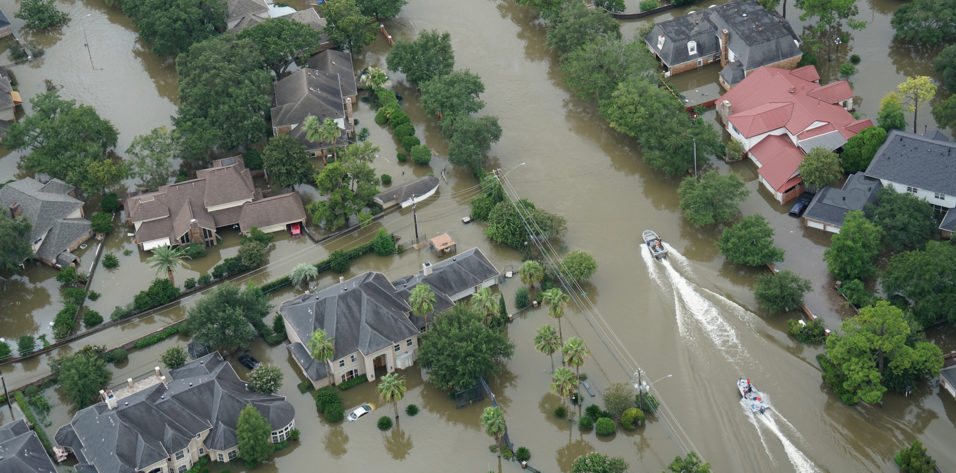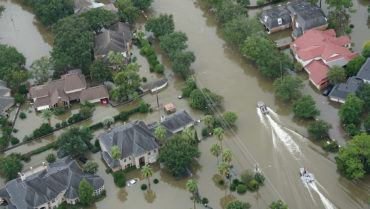
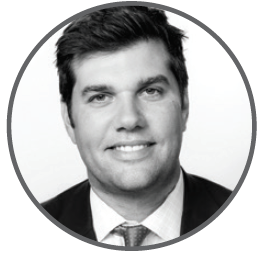
Many disasters have names that help to lodge them in people’s memories. Hurricane Katrina devastated New Orleans in 2005. Superstorm Sandy wreaked havoc on the East Coast in 2012. Hurricanes Harvey, Jose, and Maria laid waste to Houston, Florida, and Puerto Rico, respectively, this past year.
But some events can be just as destructive to individuals or whole communities while relatively escaping the consciousness of the wider public. Such was the Denham Springs, Louisiana, flood of August 2016. In this suburb of Baton Rouge, according to local news coverage at the time, 90% of homes took on water during the flood, and the main highway through town was washed out by the floodwaters (Figure 1).1
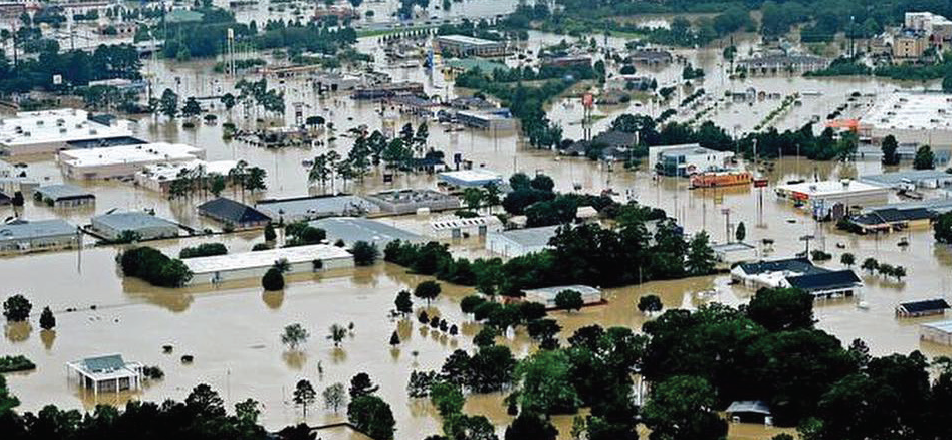
Figure 1. Arial shot of Denham Springs, Louisiana, and the surrounding area.
Floods can be deceptive. When we talk about a hurricane or tornado, there are no misperceptions about their destructive powers. Floods can be every bit as devastating, but when most people hear the word flood, they are probably thinking, “Worst case scenario, it could change my route to Starbucks that morning.” The word does not evoke the fear and respect that other words might. But now, given our experience, we know it certainly should.
The damage from the flood of 2016 may have been more localized than the destruction caused by Hurricane Harvey, across a wide swath of Southeast Texas and Southwest Louisiana, but it affected our local residents deeply.
We know that because we are local residents. As a surgeon (Blake) and an administrator (Chuck) at Williamson Eye Center, with locations in Baton Rouge, Denham Springs, Zachary, and Gonzales, we felt firsthand the effects of the Denham Springs flood of August 2016—a storm without a name. In parts of this article, each of us will speak in his own voice, but most of it is the two of us speaking together. This is the story of our practice and a storm with no name.
BEFORE THE DISASTER
For those seeking to recover from a complete disaster, whether a tornado, hurricane, earthquake, flood, or fire, the recovery process can be long and arduous. It is worth noting that recovery from a natural disaster, one that completely wipes out part or all of a practice, must start before the disaster. Having things in order before disaster strikes is critically important, especially in relation to insurance.
How bad was this flood? In the town of Watson, Louisiana, a few miles north of Denham Springs, it rained 31 inches in 48 hours. By comparison, Seattle gets about 34 inches of rain per year. The storm dumped three times the amount of rain that our area experienced during Hurricane Katrina. Meteorologists have estimated that more than 7 trillion gallons of water fell in our region—that is enough to fill Lake Pontchartrain, the 40-mile-wide lake outside New Orleans, four times over.2
This was not just any flood. It was a thousand-year storm, and we never saw it coming. With a hurricane, there is generally ample warning. In this case, we heard there was some rain in the forecast. But, in our region, in the summer months, it rains often, and so the storm came silently. And then it wiped out everything.
A JAW-DROPPING MOMENT
Blake: I’ll never forget the day of the storm. We knew that our Denham Springs location was taking on water and that our staff was not going to be able to get to work, so we canceled clinic.
The Denham location was the one I was going to that day, and I knew clinic had been canceled because of the flood waters, so I was taking it easy. Then I got a screenshot of our reception area from my father, Charles H. Williamson, MD (Figure 2). It looked like a fishbowl. The water was almost up to the top of the reception counter. It was a jaw-dropping moment that I will never forget.

Figure 2. The screenshot Charles H. Williamson, MD, sent to his sons, showing the damage at their Denham Springs location.
Chuck: I got the same picture. We had movement sensors on our security cameras, and at 8 am the first signals started going off. By 1 pm, water was up to the counters.
EARLY RESPONSE
Blake: I have to say that my brother Chuck was instrumental in our response to the flood, and he quickly stepped into the role of leader, along with our nursing director Julie and several other staff members.
They started calling staff members to find out where everybody was and whether they were safe. But it was Chuck who was running point on it all, making an action plan as we were gathering information on our satellite offices.
Chuck: The first thing we thought of, without question, was our staff. We made sure to contact every one of them to see if they were OK. Our second task was to contact all of our patients scheduled for visits or surgeries in the next 3 or 4 weeks. We wanted to check on their status, especially those who had medical issues that needed active management, and to let them know that we were there for them and were going to continue to take care of them and try to help them as best we could.
Our next job was to try to physically get to our practice locations to assess the damage. That was something we could not do for a period of days because, unlike hurricanes and tornadoes that pass by, floodwaters recede slowly. We could not access our Denham Springs location until 5 days after the flood, and at that time the damage assessment was that it was completely destroyed (Figure 3).
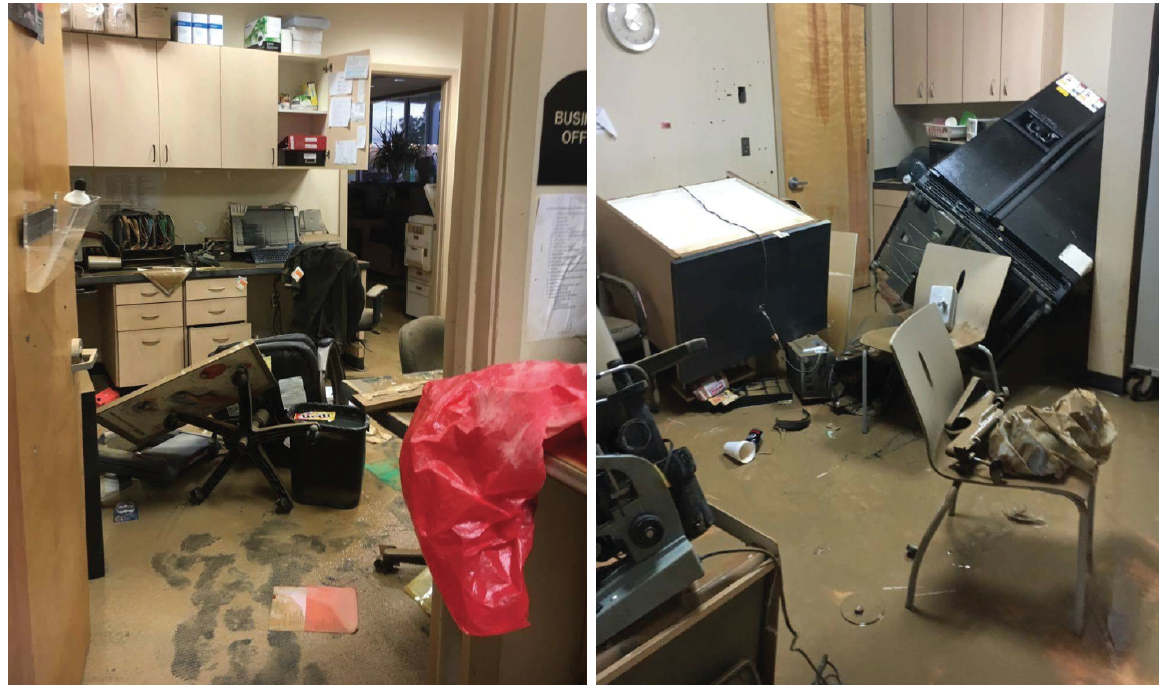
Figure 3. Interior shots (left, right) of the destruction at Williamson Eye’s Denham Springs location.
With that assessment in place, we began contacting our insurance carriers and scheduling assessments—that was when I realized that our disaster recovery plan should have started 10 days ago. If you take away anything from our experience, let it be this: Every practice owner should review his or her insurance plan and make sure he or she knows exactly what is included in that coverage. Just look at everything you have, and then imagine it’s gone. Next, ask yourself, how are you going to fund getting it all back? That way, it is all sorted out before a disaster occurs. Often the coverage that people think they have is not what they actually have.
For floods, insurance coverage can be especially tricky. Events like tornadoes, fire, and hurricanes all have business continuity riders that can be added to a policy, meaning that if your business is destroyed and your practice generates, say $100,000 a month in revenue, that loss can be covered. But for flood, that type of coverage is not widely available. Many businesses in our area were devastated by the flood, and I’m not sure how others made out with insurance coverage. We had two policies that we relied upon for recovery of costs. We lost almost all of our equipment, and our flood policy covered the cost of reconstruction.
Blake: We didn’t have flood insurance on the building itself because we are at or above sea level and outside of any flood zone. In fact, very few people in our community had flood insurance because of this. Our insurance agent told us it wasn’t required given that we we were out of the flood zone. When your insurance agent basically tells you that insurance isn’t required, you tend not to buy.
Chuck: Luckily, the landlord for our building had to get force-placed flood insurance about a year before the flood. (Force-placed insurance, also known as collateral protection insurance, is an insurance policy placed by a lender or bank when a property owners’ insurance has lapsed or is deemed insufficient.) We got lucky with that particular circumstance, but it still cost us well over a $500,000 to recover our losses, including equipment and renovations. Our insurance proceeds were about $370,000, so roughly $150,000 had to come out of our pockets. This does not include the loss of income we suffered as a result of our Denham Springs location being closed for 58 days.
HELPING THE STAFF
In addition to the damage to our practice’s building, many of our staff members also experienced great losses, including 22 who experienced a total loss, meaning loss of house and vehicle. To make sure that everyone had a roof over their heads, for those who didn’t have relatives they could stay with, we rented several extended-stay apartments close to our main office. That way, everybody could come to work—these people needed the paycheck now more than ever. At the same time, it was a delicate balance because these people had just lost everything.
That began our process of rebuilding the practice and coming together again as a team. Our main office in Baton Rouge became a makeshift staging area—a place for people to bring donations. We have more than 100 employees, and everybody who was not wiped out helped by bringing in clothes and other household needs. We made sure there was always food, and there was a daycare for a few days (Figure 4), as no daycare centers were open in the area due to the flood.
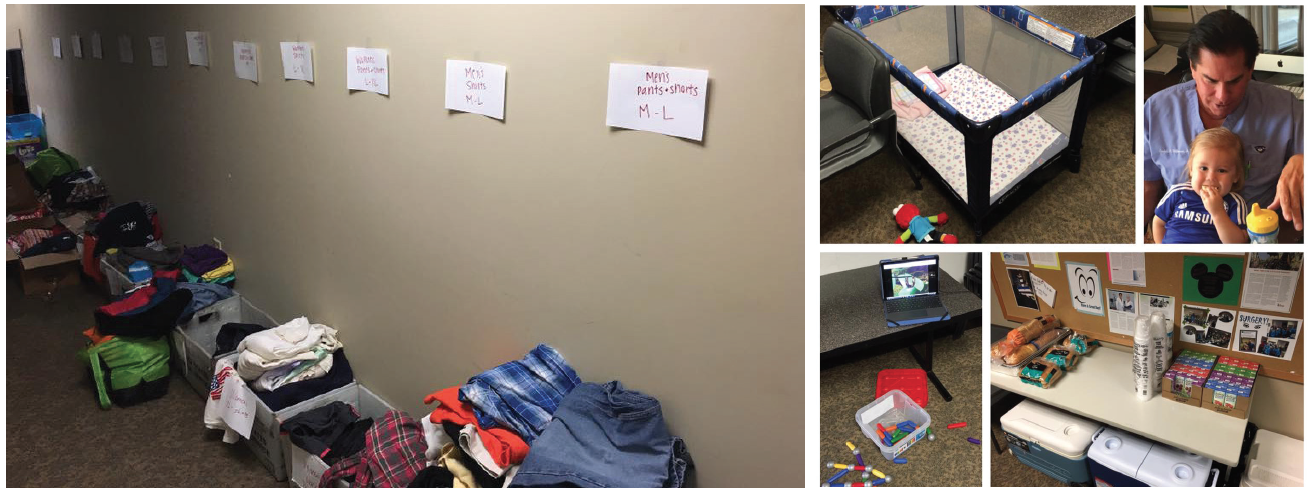
Figure 4. Employees brought in donations (left), and the practice ran a makeshift daycare so that employees could bring their children to the office and continue to work (right collage).
We kept our entire staff on payroll throughout the closure in Denham Springs. A lot of other businesses in our area, including medical practices, did not do that. We thought it was important to keep paying our people. Our payoff, in a way, was that the experience brought the staff closer together. Many of our employees—both those from other sites who weren’t affected by the storm and those who were—started volunteering to help with the contracting work. We had our techs and nurses tearing down drywall and building things with hammer and nails.
It was rewarding to see people who didn’t necessarily know each other beforehand working side by side. We had opticians, technicians, and billing staff working shoulder-to-shoulder (Figure 5). We were there too (Figure 6), cutting out drywall, breaking down damaged furniture and exam room equipment, and staging it outside for the insurance adjusters (Figure 7).
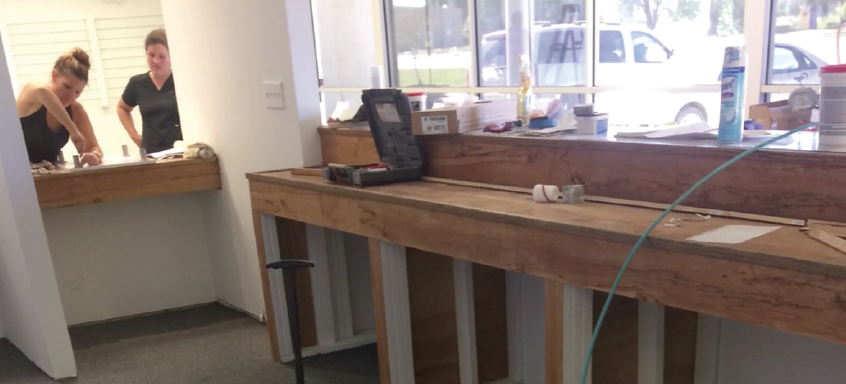
Figure 5. Staff working side-by-side to rebuild Williamson Eye.
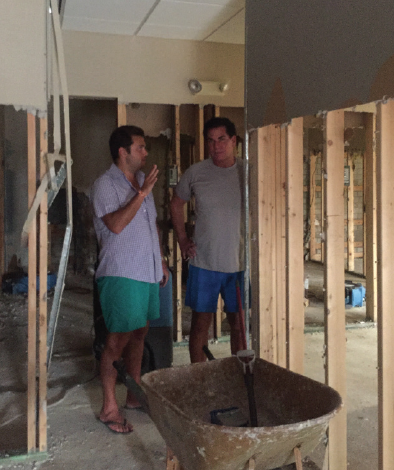
Figure 6. Blake and his father walking through the practice during the rebuild.
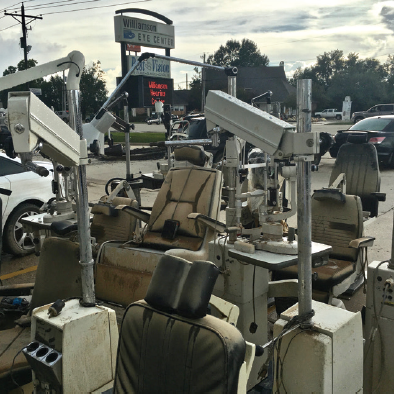
Figure 7. Damaged furniture and exam room equipment was staged outside for insurance adjusers.
After getting the staff members’ help on some of the original demolition, we repaid the favor by helping them out in their own homes, tearing out damaged drywall and helping them try to resurrect their homes and recover their belongings. Talk about a team-building exercise; we were able to demonstrate that this was not just about our office, it was also about them.
A REAL GAME-CHANGER
Blake: One thing that helped to get our reconstruction moving was an idea Chuck had: Rather than trying to line up local commercial contractors for the work, he called a large homebuilder friend of his who was pulling in skilled labor from New Orleans. Everyone else was calling the guy down the street, and the guy down the street was literally swamped himself. But just an hour away from us, there were plenty of people who could do the work. That decision was instrumental in getting us back on our feet in less than 2 months.
Chuck: Obtaining immediate manpower is the most important next step after damage assessment. You have to have people on site immediately, starting the triage process (Figure 8). Our entire metropolitan area was effectively made unlivable overnight, without warning. Local contractors would not be available until they had looked at maybe 25 or 30 other clients. We decided to basically contract the rebuilding effort by ourselves. Fortunately, over the years I have worked with a number of subcontractors I could immediately call upon to help in our rebuilding process.
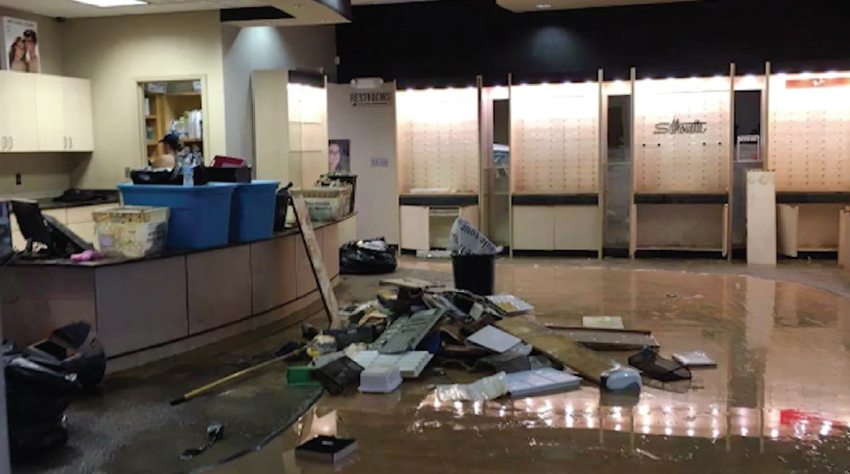
Figure 8. The triage process at Williamson Eye’s Denham Springs location begins.
KICKSTARTING
It was heartwarming to see the outpouring of support from our colleagues around the United States and from our partners on the industry side. Mark Boren of Bausch + Lomb and several other thoughtful people started Kickstarter-type donations pages for our 22 employees who experienced total loss. These pages were able to raise about $10,000, which was incredible, and our father matched the contributions to bring the total to $20,000.
On the day we distributed the money, we invited everyone to the meeting room in our Baton Rouge office. We wanted to do something special to commemorate the occasion, after all the difficulties everyone had been through. We had made a video of a skit starring the two of us and other staff members, and we played the video on a big screen for the whole staff (see video below). It was a celebratory atmosphere, cutting through the doom and gloom and looking ahead to better times.
A CLEAN, BRIGHT SPACE
On the bright side, we now have a brand new shiny clinic. We tried to use our tragedy as an opportunity to create the best satellite we could, and we designed it from the floor up. Where we had six refraction lanes before, we now have nine lanes and four workup pods—a total of 13 rooms to see patients in, increasing the efficiency of patient flow.
The design was industrial, with exposed brick, and it is clean and modern-looking. With some new modern artwork by my aunt and accomplished artist Betsy Williamson (www.betsywilliamsonart.com) and local graffiti artist March Fresh (@marcfreshart), it transformed our practice into a bright space for our teammates to walk back into when we reopened our doors, 58 days after the flood.
Lessons Learned
When we think of lessons learned from this event, a few things come to mind:
No. 1: Take care of your staff first, before everything else. First and foremost, ensure that they are OK.
No. 2: Make sure you are sufficiently insured. If insurance agents say it’s not required, take another look. If it doesn’t cost too much to add a supplement, you may want to add it on.
No. 3: Preparing earlier is better. Don’t wait to get that cell phone picture of your flooded satellite; have a disaster recovery plan in place.
No. 4: When you reopen, be flexible. Get patients back in the door and give them a sense of normality. You may need to do things you don’t normally do—see patients on the weekend, travel to different satellite locations—whatever it takes to get the patients back in.
1. 90 percent of homes in Denham Springs flooded. WWL-TV website. August 18, 2016. http://www.wwltv.com/article/news/local/90-percent-of-homes-in-denham-springs-flooded/298547707. Accessed February 20, 2018.
2. 2016 Louisiana floods. Wikipedia. https://en.wikipedia.org/wiki/2016_Louisiana_floods. Accessed February 20, 2018.

